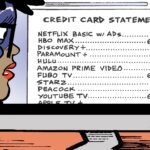 Tod Sacerdoti is CEO of BrightRoll, video advertising technology company, makers of the BrightRoll Exchange (Read today’s release.).
Tod Sacerdoti is CEO of BrightRoll, video advertising technology company, makers of the BrightRoll Exchange (Read today’s release.).
AdExchanger.com: Why does the exchange format lend itself well to video?
TS: The primary reason the exchange format lends itself to online video is because the automation of media buying and selling provides efficiencies and liquidity for all players involved. In addition, the total numbers of buyers at scale in the video category is still small relative to display because building video ad serving technology and aggregating video ad inventory is really hard. The exchange format will significantly increase the number of total buyers of video advertising, which will fund further content development and will raise the total dollars received by large inventory owners.
How will BrightRoll Exchange differentiate from other video ad marketplaces such as Adap.tv?
At this time, there quite a few large supply side sources of video inventory. Some of these sources call themselves marketplaces, some call themselves ad servers, some call themselves mediation layers and then you have the big video ad networks. We are primarily focused on solving two problems — aggregating the largest pool of brand-safe video ad inventory in the world and making buying video advertising as efficient as buying display advertising. In order to achieve these objectives, we have been aggregating and will continue to pursue inventory from many sources, including those who call themselves a marketplace, ad server, mediation layer or ad network. Finally, BrightRoll Exchange is built on the strong foundation of our technology stack, which has been honed and refined based upon four years of market feedback using real-world conditions.
What is the target market on the buy and the sell sides? And, when will exchange be open for business?
Given that we already operate one of the largest video ad networks in the business and that we have built automated access to what we believe is the largest pool of pre-roll video inventory in the market, we are focused nearly exclusive on the buy side. Our target customers are large buyers of media, whether those be advertisers, agencies, ad networks or large publishers. The exchange has been operating for nearly six months and was opened for business in Q2.
What are key differences between a display ad exchange and a video ad exchange?
The most fundamental difference between display and video is that video advertising is much more of a branded medium. For example, in display the majority of ad impressions on exchanges are user targeted, whereas in video the majority of ad impressions on exchanges will be site targeted. In addition, buyers of video are much less direct response-focused, meaning that quality of inventory, category of content, transparency and brand research are very important. Lastly, the ad units are fundamentally different and less standard. The pre-roll ad unit has lots of variants, such as whether it auto-starts or is clickable, and these variants change the price dramatically.
What about enabling effective cookie mapping between display inventory that a demand-side platform may do between BrightRoll Exchange and display inventory? Is it possible?
It is not only possible, it is the most likely long-term strategy for sophisticated media buyers. We expect many buyers over the next few years to use cookie mapping such that they can buy display and video inventory from a single platform. That all being said, the volume of video inventory available today is still tiny relative to display, and RTB buyers will be disappointed with the budgets they are able to fill on narrow targets. In order for DSPs to really scale their buying in video, we will need to see continued growth in inventory in the category over the next few years.
Will you allow third-party data for targeting purposes such as BlueKai or eXelate?
We already allow buyers to create segments and target those user segments whether they are from their own data or from third party data providers. In addition, we also have multiple data providers completely built into the platform such that you can target their entire segments immediately, without the the need to build the segment or develop your own independent relationship with that data provider. We will have some announcements around data providers coming soon.
What publishers will be providing inventory? Will it be transparent to all buyers?
The BrightRoll Exchange includes hundreds of publishers with more than 1000 unique URLs that are targetable by buyers. Transparency has been an essential part of our ad network business and will always be a key value to all that BrightRoll has to offer. Our inventory model is nearly identical to that of the DoubleClick Ad Exchange by Google, in that publishers on the exchange are most often transparent but do have the ability to be anonymous. Either way, all site placements are targetable, such that buyers have the complete control they need to execute their campaigns.
Where does BrightRoll Exchange fit with your ad network strategy? Does the ad network also buy through exchange? If so, how do you manage the apparent conflict of interest?
To put it simply, our ad network is an essential part of our strategy. Video ad networks control the majority of unsold video ad inventory in the market today, and it is very unlikely that any non-network player could aggregate enough video inventory of value. This is nearly identical to RightMedia, where Yahoo! ad network inventory is a key part of the exchange and the Yahoo! sales force sells into the exchange, making Yahoo! a buyer. We operate our exchange similar to the way the large display ad exchanges operate.
Overall, what surprises you about the video ad market today?
What surprises me most about the business today is how little sophistication there is throughout the market. Essentially, you have less than 20 publishers or ad networks doing more than $20M a year in online video advertising today, and very few internationally, so most of the expertise is clustered in these organizations. I believe in two years there will be more than 50 companies doing more than $20M a year in revenue in the U.S., and probably an equal or larger number internationally, which will raise the education, awareness and knowledge throughout the entire industry. The real lesson from online video is that it is good to be in a category that will grow 40 percent or more for each of the next five years.
Follow Tod Sacerdoti (@todsacerdoti) and AdExchanger.com (@adexchanger) on Twitter.













